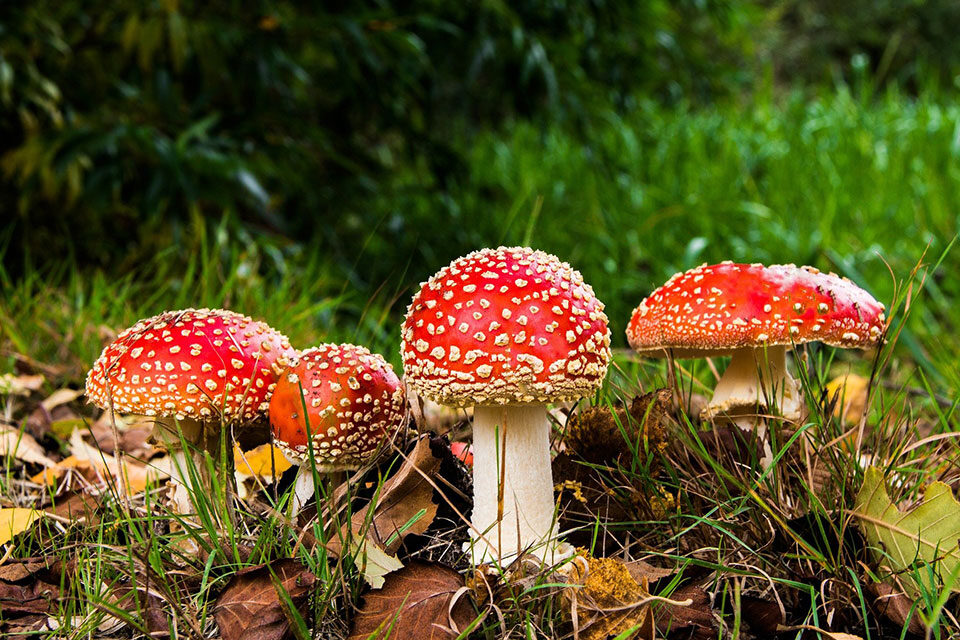This beautiful mushroom is well distributed around the Northern Hemisphere, in woodlands and forests. Where it can be seen between August and November.
It can also be found in some areas of Australia, New Zealand and South Africa.
Identification
It is recognised by a red or orange red cap, with thick white scales on the surface. The stem of the mushroom (or stipe) is white.
As the mushroom grows up through the ground it sometimes appears white and hard, almost spiny. As it grows the white scales crack apart showing the lovely red cap. Other times it will emerge red and the scales grow. The red cap appears waxy. This mushroom has gills.
The fly agaric is probably the most easily recognised mushroom because the design of it is often used in popular media, cartoon and images.
This amazing mushroom is poisonous and psychoactive. However human deaths are rare. In some European countries and the US, fly agaric is eaten like any other mushroom, although it has to be prepared in a special way to reduce the toxicity.
In Siberia, some indigenous people have used fly agaric for religious and cultural rituals. Allowing users to become intoxicated and hallucinate for religious enlightenment. It has a connection to the Soma and moon god. It is believed that this connection to shamanism is what has led to many being wary of the fly agaric.
Active Compounds
The main psychoactive compounds in fly agaric is ibotenic acid and muscimol
Ibotenic Acid

Muscimol

Uses
The fly agaric is so called because it used to be used as an insecticide. Slices would be cut and put inside a dish of milk. The mushroom would attract the fly and once they drink the milk they die.
The compounds found in fly agaric have been tested to understand their affects on the body, and the way in which enzymes within the body act on these chemicals as they’re broken down. It has been found that fly agaric has no affect on memory as it was believed, but it does affect spatial awareness, muscles and inhibition.
But it’s not all bad!
There is a great deal of research in to the positive relationship between mycelium, which is the network of hyphae, a root like structures under the ground which is the actual fungi. Mycelium is believed to act as a communication network, spreading nutrients through the roots of other plants.
An interesting book called The Hidden Life of Trees by Peter Wohlleben discusses the possibility that mycelium acts as a communicator for the plants and trees in the area. There has been research in to trees ‘supporting’ each other by providing additional nutrients to smaller trees from bigger, older trees. The book explores this and the role mycelium might play in spreading these messages quicker.
This is also considered by Paul Stamets in his incredible research in to fungi, one really good book is Fantastic Fungi which is certainly worth a read of you want to look at this further.
Fly agaric is no exception to this supportive relationship with trees. It has a mutually symbiotic relationship with birch trees, meaning both the fungus and the tree benefit from the relationship. Fly agaric provides nutrients to the tree and the tree provides sugars to the fungi.
If you go looking for this amazing mushroom, then happy hunting! Just remember to wash your hands thoroughly if you choose it pick it!
I also do not recommend consuming foraged mushrooms, unless you really know what you are doing.
Happy mushroom hunting! Please feel free to share your pictures with me.




